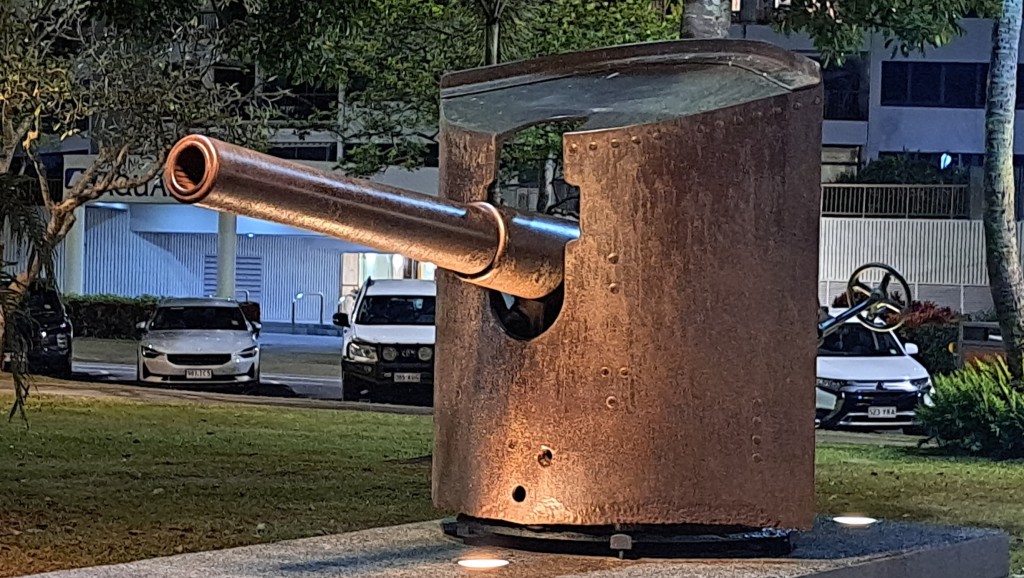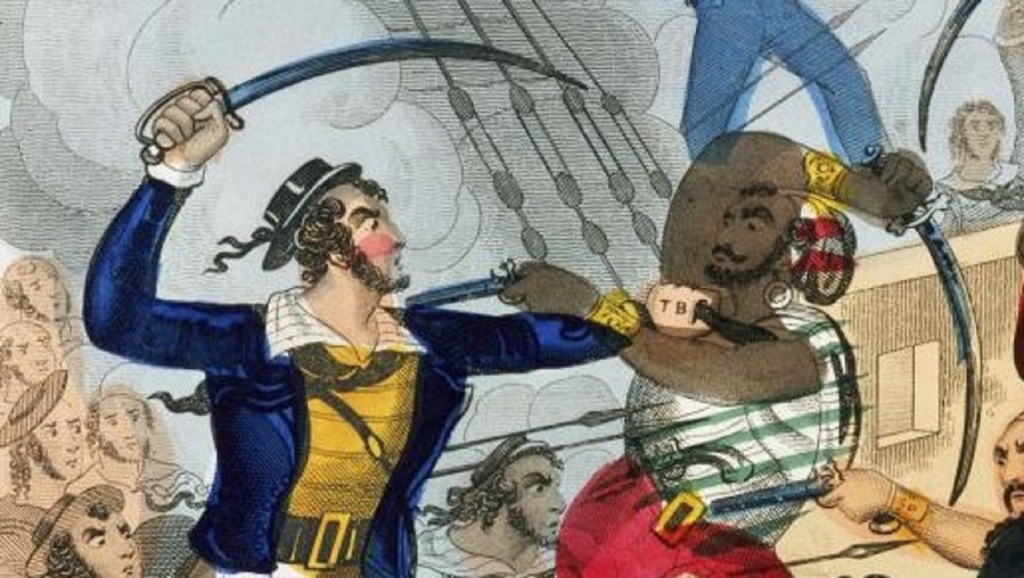
On the esplanade in Cairns there’s an old five-inch coastal defence gun that the Queensland colonial government sent to the city in 1889. It caused a war. I told a version of this story on radio 4WK.
The closest the gun (pictured above) came to seeing action was the result of rivalry between the Cairns Naval Brigade and the Cairns Artillery Volunteer Corps. They both wanted the gun, they were keen for a fight and so when the chance came, they jumped to it.
One man there was Gunner William James Undy. When King George V visited, Undy represented the Cairns defence services at the ceremony. But his normal job was a railway guard with the Queensland Railways. He applied for a similar position in Toowoomba but was knocked back. And so he was stuck in Cairns for the historic battle.
Also there was Naval Instructor William Mudford. Mudford had served in the British Royal Navy since 1872, and had served aboard Nelson’s famous flagship, Victory, and around the world in Turkey, Russia, Philippines, and in an East Indian posting in the suppression of the slave trade. He came to Queensland as chief gunner and founded the naval cadet movement in the colony. This included the naval cadet corps at Bowen House School which was once housed at the historic Brisbane home “Dovercourt”, and today is part of “Churchie” the Anglican Church Grammar School in Brisbane.
There was a drill night at the Lilybank homestead at Stratford, which today is a suburb of Cairns. The trouble brewing between the Cairns Naval Brigade and the Cairns Artillery Volunteer Corps was exasperated by the generosity of Cairns business people who supplied, or rather oversupplied, the free beer. One of those donors was probably the owner of Lilybank, Alexander Draper, who would be mayor of Cairns five times. The house later burnt down.

It was decided after dinner to conduct a sham fight and so the Naval Brigade took up their position on the ridge above Lilybank. They had to be dislodged by the Artillery Volunteer Corps.
The officer of the attacking forces made the men so tired by repeated orders to retire that some of them decided to have a war on their own. When the next order came to retreat, the captain stood dismayed to see the men steadily going the wrong way. He kept whistling the retreat but his men continued advancing.
When approaching the ridge, the attackers were startled to see the Naval Brigade forces advancing down the slope with fixed bayonets. Realising what was happening, the men of the artillery battery decided to fix bayonets too.
Leading the Naval Brigade was Instructor Mudford who was waving a navy cutlass.

The first man he met was Gunner Martin. He parried the thrust with the loss of some skin on his fingers. He threw down his rifle, and punched the instructor who fell to the ground.
The instructor got up and continued. He then met Gunner James and thrust his cutlass at him. The gunner parried but not quickly enough because the point of the instructor’s cutlass caught him under the eye.
Behind Gunner James was Gunner Rotz whose rifle was loaded with blank cartridge. Rotz levelled the rifle on the shoulder of Gunner James, took aim and shot instructor Mudford in the face at point blank range
Poor Mudford was knocked out. He went white as a ghost and the powder was embedded and marked his face for the rest of his life.
The feud continued until the attackers’ Lieutenant Sturt arrived frantically waving his sword and calling his men to rally round him.
By this time people were rushing from everywhere to be in the fight. The combatants were eventually got under control. The battery marched one way and brigade the other.
Subsequently, Instructor Mudford identified our want-to-be Toowoomba Gunner Undy as the man who had shot him. Undy was court-martialled by Colonel George French, who was the commander of the Queensland Defence Force, and ordered to be drummed out of the company.

But then Gunner Rotz stepped forward and admitted his guilt. Instructor Mudford was awarded £50 damages. And Gunner William Undy – who wanted to be in Toowoomba all along – was saved from disgrace.
His son Corporal William Undy served Australia in the First World War, and another son Warrant Officer Arthur Undy served in the Second World War.
So in the end the Undys performed well and held up under battle pressure, dating all the way back to that famous Battle of Lilybank. By the way, the Cairns Naval Brigade hot the gun.
CLICK HERE TO LISTEN TO A VERSION OF THIS STORY TOLD ON RADIO 4WK.
Photo credits:
Queensland colonial defence gun, Cairns, 2024 – Harold Peacock 20240611_195232.
Lilybank, Stratford, home of A.J. Draper, 1920 – Cairns Historical Society.
British sailors boarding an Algerine pirate ship – Wikipedia Commons.
George French – Australian Boer War Memorial.
